Home care for indoor hibiscus is minimal, and this plant brings a lot of joy. When looking at beautiful flowers, the mood improves, a surge of strength and energy sets in. Numerous green leaves of the plant purify the air in the apartment, improve its microclimate.
Material Content:
Hibiscus room: types and their description
A plant of the genus Hibiscus in nature is represented by 241 species. Some are grown as indoor plants, unpretentious, with beautiful flowers.
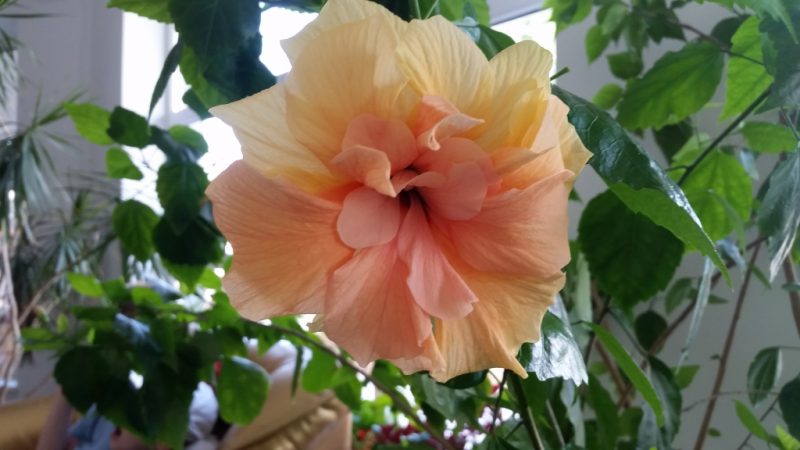
The most common indoor species is the Chinese rose (Hibiscus rosa-sinensis). This is an ornamental shrub with red, yellow, or white flowers. Corollas about 14 cm in diameter are simple, terry or semi-double.
Popular varieties:
- Florida - orange red;
- Rosa - semi-double, pale pink;
- Anita Buis - yellow-orange;
- Hamburg - terry bright red.
In addition to the Chinese rose, in the conditions of the apartment it is easy to grow the following types of hibiscus:
- Hibiscus syrian (Hibiscus syriacus) is grown as a decorative plant. In the south of Russia and Ukraine, this shrub can grow in the garden, reaching a height of 5 meters. In temperate latitudes, it is grown only as a greenhouse or indoor flower.
- Hibiscus triple (Hibiscus trionum) is an annual herbaceous plant from 5 to 75 cm tall, grown as a medicinal and ornamental. The flowers are pale yellow, bell-shaped, about 3 cm in diameter, with a large purple spot in the middle. The leaves are beautiful, openwork, dissected into cirrus-separated lobes.They make medicinal syrup, which has a diaphoretic effect.
- Hibiscus sabdariffa (Hibiscus sabdariffa) is native to India. This species is popular in that it is made from hibiscus flowers. All parts of the plant are edible. They are grown on an industrial scale in most tropical countries, in a temperate climate you can plant seeds in a flower pot, and get a healthy and beautiful houseplant.
- Dissected-hibiscus hibiscus (Hibiscus schizopetalus) comes from central Africa. It is a shrub with bright red flowers up to 5 cm in diameter. The corolla is distinguished by bent petals with deep uneven fringe, which makes the flowers look like openwork lanterns. This species is grown in greenhouses and houses.
Home Care
Hibiscus love sunshine very much. In spring, when the days get longer, buds are tied to the plant. With good care, hibiscus can bloom until fall. One flower, blossoming for a day, is replaced by another.
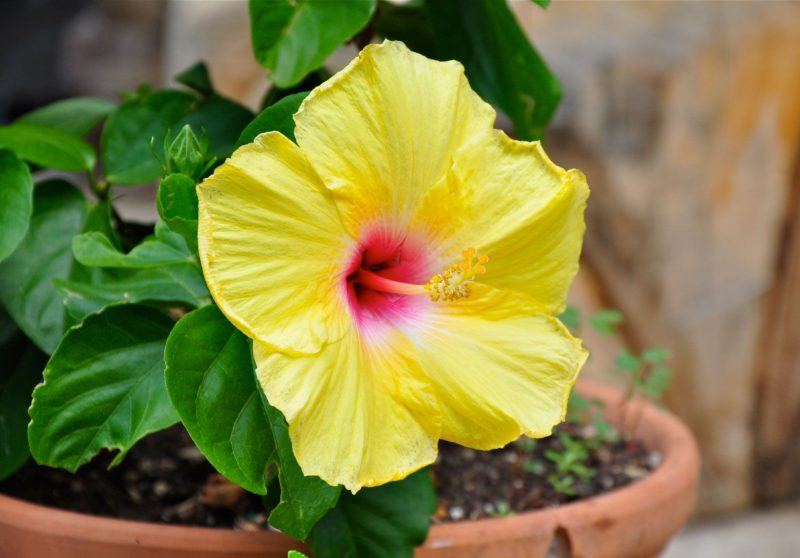
In summer, plants can be placed on an open, well-lit loggia or taken out into the garden.
Transplant and soil requirements
The plant is transplanted annually or once every 3 to 4 years. A small volume of the pot can inhibit the growth of the bush, if the size of the room does not allow to hold a large hibiscus.
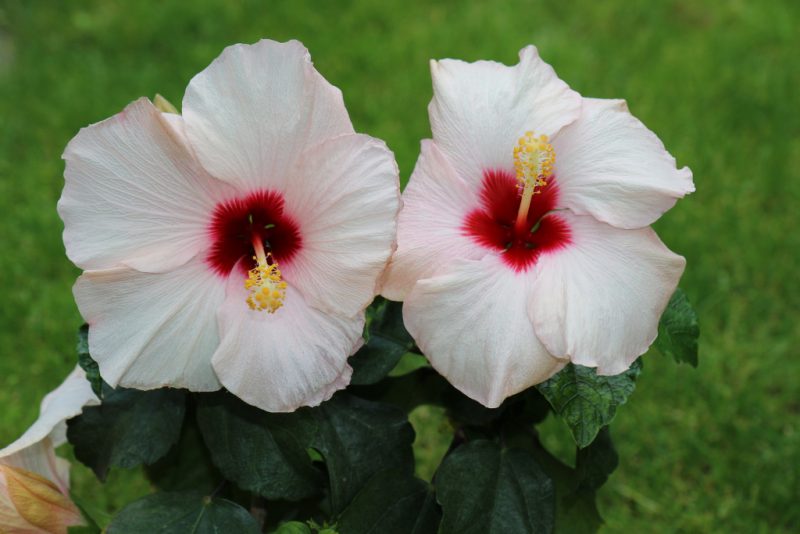
The transplant is done from March to June, when active growth begins. Large, unbearable hibiscus simply remove the topsoil in the pot, and pour fresh, fertile soil.
The soil should be nutritious (hibiscus consume a lot of mineral and organic substances), light, permeable, with the addition of humus. Acidity is neutral, pH is about 6 units. You can independently prepare the substrate from humus, sod land and sand in a ratio of 1: 2: 1.
There should be drainage holes at the bottom of the hibiscus pot. Expanded clay, pebbles or pieces of polystyrene are laid at the bottom, only then the soil is poured, and the plant is transplanted. Do not shake the ground from the roots in order to injure them less.
Problems after transplantation usually do not arise. We must not forget to water the plant and spray the leaves with water. If the soil is fertile, in the first 2 - 3 months fertilizers are not needed.
It is interesting:hibiscus "flower" of death
Watering a flower
Watering hibiscus is very important. With a lack of moisture, the leaves dry out, buds may fall.
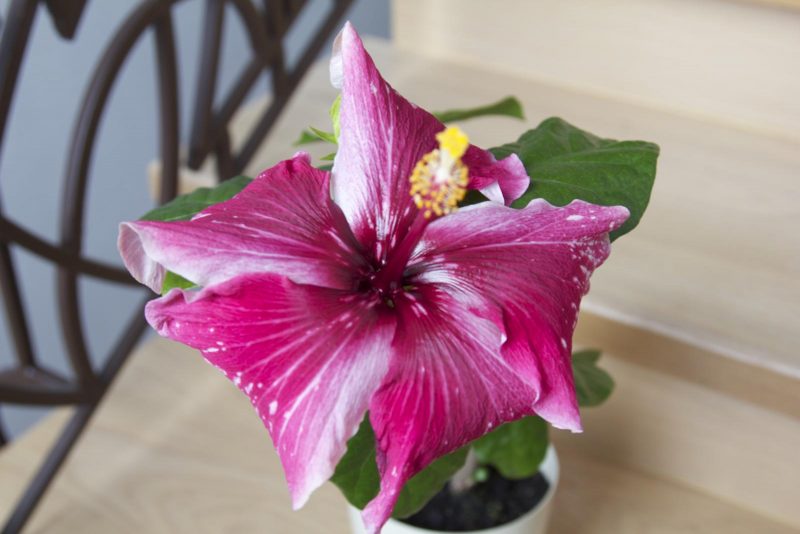
You can water a large plant once a week, but abundantly. All excess moisture will drain into the tray and will soon evaporate on its own.
Hibiscus pruning
To form small bushes suitable for growing in an apartment, hibiscus is cut annually. This is best done in spring, in early March.
The top is cut off from the central shoot, due to which the side buds wake up and a lush bush is formed.
The more branches the hibiscus has, the more flowers will form.
Fertilizer and fertilizer
Top dressing is applied every 10 days or 1 time in 2 weeks. They are especially needed for plants that grow in small pots.
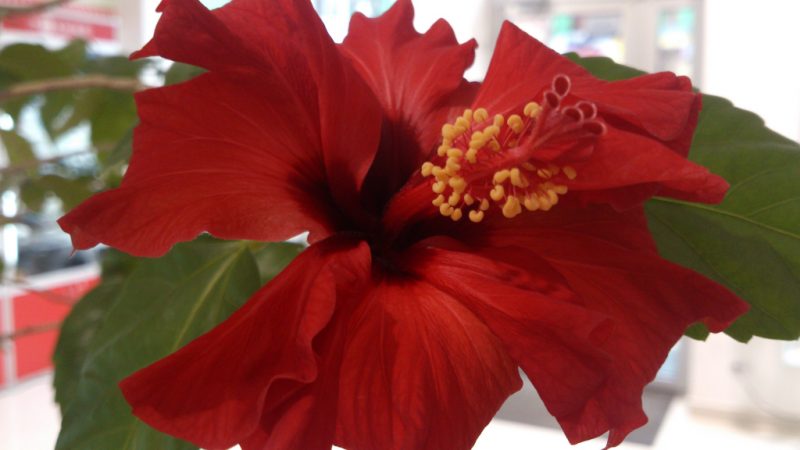
They use complex fertilizers for decorative-deciduous and flowering crops - “Athlete”, “Gilea”, “Master”, “Fertomix Biohumus”, “Magic Mix”.
Pest and Disease Control
Hibiscus like insects pests, its leaves to the taste of caterpillars. On a diseased bush you can see aphids, thrips, whiteflies or spider mites.

If insect pests are found, systemic insecticides are used, for example, Aktaru. The drug is convenient in that it is not necessary to spray on the leaves, it is enough to water the plant under the root, and all pests will die after tasting the plant juice.
To combat the spider mite, acaricides must be used, and for prevention, arrange a flower for a warm shower and spray water on the leaves.
It is interesting:hibiscus garden
Breeding Indoor Hibiscus
Most varieties of hibiscus are easily propagated by cuttings. Cut off shoots are easily rooted in water or soil substrate.
For propagation of those types of hibiscus, which hardly let the roots out of cut shoots, use the vaccine. A correctly vaccinated vaccine takes root in 5 days, the plant quickly begins to develop.
Hibiscus can also be propagated by seed. To obtain seeds during flowering, artificial pollination is done, pollen is transferred with a brush from the stamens to the pestle. A box with seeds of 5 to 10 pieces is tied, they are collected and sown in the spring in a container with the ground. This method of growing is longer, stale seeds may not sprout. Tying seeds takes a lot of energy from the plant, so this method can not be called the best for reproduction.
Read also:Hoya Home Care
Why do hibiscus leaves turn yellow and it does not bloom
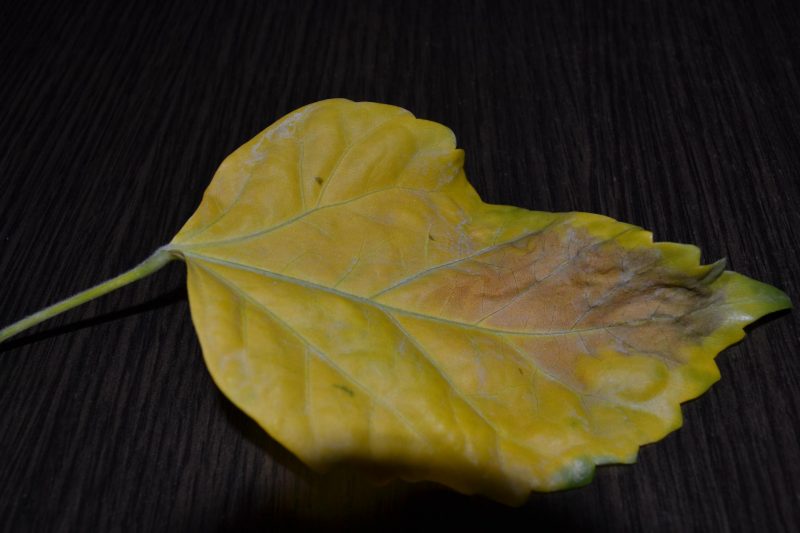
Problems with falling and yellowing of leaves can be caused by various reasons:
- Hibiscus is a heat-loving plant; at air temperatures below 15 ° C, leaves begin to turn yellow.
- Fall of the lower leaves and yellowish color of young shoots can be a sign of chlorosis. Most likely, the irrigation water contains an excess of chlorine and calcium, the plant lacks nitrogen and iron. For high-quality irrigation, only settled water or spring water is used, adding iron chelate to it according to the instructions or complex fertilizers with this microelement.
- Abundant watering, which caused root decay, also leads to yellowing of the leaves. Hibiscus needs to be transplanted urgently if the soil in the pot does not dry out for a long time, leaves fall off and turn yellow, an unpleasant musty smell emanates from the ground. All old soil from the roots must be removed, washed and treated with fungicide. Plant the plant in a new pot and fresh soil, do not water 2 days after planting.
To form a flowering bush, pruning a hibiscus is important. The plant blooms at the ends of shoots, and by stimulating their growth, abundant flowering can be achieved.
You need to do regular pruning in the spring or bend down the long side branches. Then, on bent branches, at the base of the cuttings of the leaves, new shoots of shoots will appear.
When wondering why hibiscus does not bloom, pay attention to the correct care for it:
- With a lack of lighting, the plant does not bloom. As soon as the sun begins to warm, 1 - 2 buds necessarily appear. Light needs bright and diffused.
- Hibiscus needs abundant watering for flowering.
- We need regular leaf and root dressings.
With proper care, the Chinese rose pleases with lush green foliage and continuous flowering throughout the year.
Signs and superstitions associated with the plant
Many superstitions and signs are associated with hibiscus. One of them claims that the flowering of a plant in a house is a sign of impending misfortunes and even death of households. The explanation for such hostility to the flower may be the tradition of growing unpretentious Chinese roses in the halls of hospitals and various medical institutions.

Experienced flower growers who do not believe in signs claim that blooming hibiscus causes only positive emotions and does not have any negative consequences for the family.
On the contrary, long-livers grow hibiscus, people are calm and balanced, happy in family life.
It is believed that hibiscus helps the owner overcome laziness and uncertainty, gives him creative and organizational abilities. It energizes the active energy of a lethargic and passive person.












